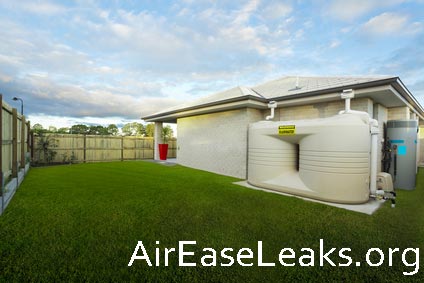Minimizing the Negative Environmental Impacts Through Natural Energy Solutions
Sustainable architecture seeks to minimize negative environmental impacts on buildings through efficiency and moderation by using energy, materials as well as the development space. Sustainable architecture makes use of a conscious approach in ecological and energy conservation while designing the building. The idea of ecological design or sustainability is to make sure those current decisions and actions do not hinder the future generations' development opportunities. Energy efficiency is the main objective of using sustainable architecture. Architects use various techniques in reducing the energy requirements of buildings, which is to increase their ability to generate and capture their own energy.

Energy Rainwater
The most cost-effective and important element of an efficient ventilating, air conditioning and heating system is as a result of a well-insulated building. An efficient building entails less heat generating and dissipating power, but also requires more ventilation capacity in order to expel the polluted indoor air. Considerable energy amounts are flushed out of these buildings in the air, compost and water streams. On-site recycling technologies effectively recapture the energy from waste stale and hot air and transfer the energy into the incoming fresh air and cold water. Solar building designs also enable buildings to exploit energy from the sun into efficient energy through active solar mechanisms like hot water panels powered by solar and photovoltaic cells.
Sustainable Architecture - The Allstream Centre
The Allstream Centre in Canada is an example of the sustainable architecture. The country has made use of the natural resources in the construction and designing of modern houses in Canada. This building is the first LEED Silver Conference in Canada with a hundred percent green power, which is generated from renewable sources reflecting today's most innovative and advanced technology.
The building is fully powered using renewable sources, which include geothermal heating. The cooling and heating system of the building were achieved through significant energy efficiencies using a photovoltaic plant in order to ensure future improvements. The hotel uses the linen-free tables in all the Centre's meeting rooms, which ensures that water is conserved through minimal laundry as well as the need for dry cleaners. During cleaning, many detergents are used and they possess many chemicals, which largely pollute the environment. The building has passed the LEED certification, which mainly assesses the building materials, energy efficiency, water efficiency, sustainable development on the site and indoor environmental quality.
Solar Energy and Rainwater - The Bird's Nest in China
The Bird's Nest in China is designed to incorporate solar energy and collect rainwater. All the resources in the stadium are natural facilitating for natural ventilation, which an aspect of its sustainable design.
The stadium does not use electricity, but uses energy from natural sources conserving the environment. The stadium is among the best sustainable designed buildings since it uses the current requirements since it does not require using any machine in the manufacture of energy or in the distribution of water since it uses water collected form the rain. The building used steel metals in its construction, which saves the usage of materials, which would not be environmental friendly. Many materials used in the construction of buildings and are dangerous to the environment. For a building to be considered sustainable, it must meet the minimum requirements, which include of conserving water, energy, building materials and should employ sustainable recycling technology. The building comprises of two autonomous structures, which are fifty feet tall and comprises of a concrete seating bowl and an outer steel frame.
Environmental Issues and Renewable Energy Sources
The need for renewable energy sources is an important environmental issue for obvious reasons, but I'll use this discussion post to call attention to how it can be applied in arguments about a related issue: climate change. Great controversy exists over whether human activity is increasing the rate of global warming, and climate scientists warn that we could cause the human race to become extinct if we increase the concentration of greenhouse gases in the atmosphere until the temperature increases enough to create a chain reaction that severely alters the planet's climate (Chomsky). Yet, even if climate change deniers are correct and it is not significantly affected by human activity, the fact remains that industrialized nations have a global responsibility to develop green, renewable energy sources anyway.
So, when arguments are made against the importance of green energy, environmentalists can simply point out that we also need renewable energy. Fossil fuels are neither green nor renewable. For example, Komanoff poses the question, "Is wind power really green?" He observes that approximately 400,000 wind turbines would be necessary to replace fossil fuels as America's electricity source. He and other theorists observe that in order to build all these windmills it is necessary to burn a lot of fossil fuels. When considering how many fossil fuels must be burned in order to build wind turbines, we realize that green energy development can be (paradoxically) quite harmful to the environment.
This is where the issue of renewable energy comes into play. Professor Noam Chomsky addresses the issue in a recent lecture and points out that we need to develop renewable energy sources regardless of whether climate change is caused by humans or not. In the argument about whether global warming is a hoax, environmentalists should simply point out that a related issue is the need for renewable energy sources – because even if global warming being increased by human activity, industrialized nations still need to develop green, renewable energy.
